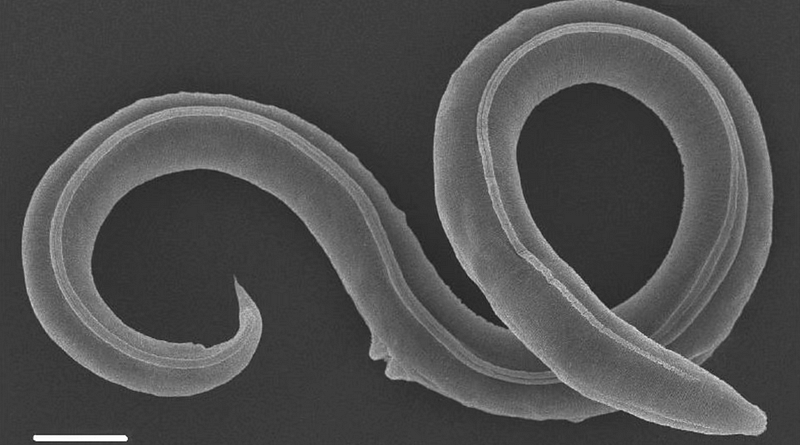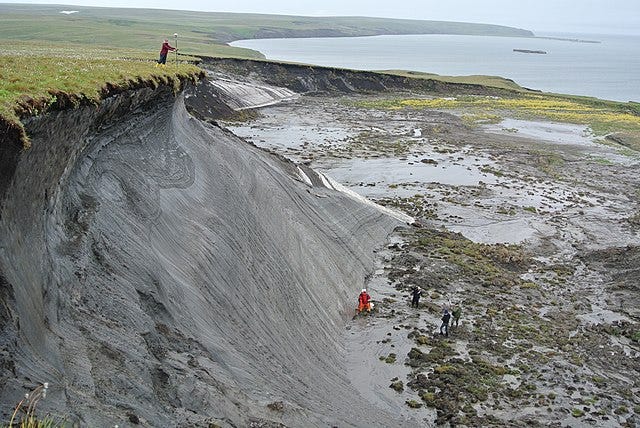Exploring Cryptobiosis: Nature's Remarkable Survival Tactics
Written on
Chapter 1: The Wonders of Nature
When life becomes overwhelming, a break can be refreshing. In the depths of Siberian permafrost, a worm managed to survive an astonishing 46,000-year slumber before a team of researchers revived it.

Nature’s creativity often surpasses our imagination. From a female spider consuming her mate post-mating to birds navigating using the Earth’s magnetic field, and even jellyfish reverting to earlier life stages in the face of stress, there are many astounding phenomena. One particularly intriguing natural response is cryptobiosis. This term describes an organism's ability to enter a dormant state (known as the cryptobiotic phase) where its metabolic activities almost completely halt, preventing growth and reproduction. This adaptation occurs in reaction to unfavorable environmental conditions, such as dehydration, freezing, or low oxygen levels. While the organism remains technically alive, it can reactivate its metabolism once conditions improve.
Cryptobiosis can occur in both unicellular organisms, like yeast, and multicellular ones, such as tardigrades. These tiny creatures, often found in soil and lichens, can reduce their metabolic rate to less than 0.01% of normal and decrease their water content to just 1% of typical levels. Remarkably, they can survive without food or water for decades, only to spring back to life when environmental conditions become more favorable.
How Does It Operate?
The mechanisms behind cryptobiosis remain largely unclear. A significant area of research has focused on the buildup of a sugar called trehalose, which consists of two glucose molecules. This sugar seems to be crucial for maintaining cell membrane integrity during dehydration.
Studies have utilized the model organism Caenorhabditis elegans, a small nematode worm that can also enter cryptobiosis via desiccation in its larval stage. While C. elegans struggles with sudden extreme stress, it can adapt to milder desiccation if exposed gradually (known as preconditioning). This exposure activates protective measures, including trehalose accumulation, the production of a protective protein called LEA-1, and glycerol synthesis. Glycerol helps prevent ice crystal formation during freezing, which could otherwise be fatal.
The 46,000-Year-Old Siberian Worm
In 2018, scientists collected biological samples from the Siberian permafrost, approximately 40 meters deep. To their astonishment, they discovered live worms in a cryptobiotic state. DNA sequencing later identified these organisms as a previously unknown species within the phylum Nematoda, which includes C. elegans. Researchers dubbed it Panagrolaimus kolymaensis, or the "Siberian Worm" for simplicity. Carbon dating revealed that these nematodes had been frozen for around 46,000 years, making it the longest known instance of cryptobiosis.

Interestingly, many genes involved in regulating cryptobiosis in C. elegans are also present in the Siberian Worm. This suggests that some molecular mechanisms responsible for cryptobiosis may be shared between these species. Experiments on both larval and adult worms revealed that the Siberian Worm can enter cryptobiosis through severe desiccation and immediate freezing, regardless of the preconditioning process necessary for C. elegans. Notably, C. elegans is unable to enter this state as an adult, indicating that the Siberian Worm exhibits greater adaptability.
While further research is required to unravel the molecular intricacies, it has been observed that the Siberian Worm raises trehalose levels significantly during preconditioning while depleting fat reserves, akin to C. elegans. Studies have shown that freezing following desiccation enhances the chances of worms surviving in a cryptobiotic state—an observation that also holds true for C. elegans, which has been monitored for survival over extended periods.
The discovery of the Siberian Worm prompts a profound question: is there a limit to how long an organism can remain in a cryptobiotic state?
What Can We Learn from Permafrost?
Traditional history often centers on human achievements, overshadowing the endurance of other life forms. While civilizations have risen and fallen, these remarkable worms have been resting in the permafrost, performing the extraordinary feat of hibernating for nearly 50,000 years.

The sampling that led to the revelation of the Siberian Worm occurred around 40 meters beneath the surface. In some Siberian regions, permafrost can reach depths of up to 1500 meters, indicating that even a modest depth can yield significant findings. Studying organisms preserved in these layers offers invaluable insights into Earth’s ancient history and a deeper understanding of the remarkable survival mechanisms that enable life to endure extreme conditions for prolonged periods. This knowledge has practical applications, ranging from improving organ preservation for transplants to creating innovative and resilient biomaterials.
Additionally, as climate change alters permafrost, we may soon encounter ancient species that have been dormant for thousands of years, possibly including pathogens that have remained inactive for even longer than 46,000 years.
Chapter 2: The Anthropocene Epoch
The first video explores the concept of the Anthropocene epoch, examining whether we are entering a new phase in Earth's history.
The second video discusses geological evidence supporting the idea of the Anthropocene as a potential new geological epoch.